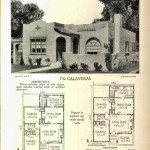How Can I Find a Floor Plan of My House?
Locating a floor plan for a house can be a critical step in planning renovations, understanding property boundaries, resolving disputes, or simply satisfying curiosity about the building's original design. While not always readily available, several avenues can be explored to acquire or reconstruct such a document. This article outlines various methods and resources available to homeowners seeking to find a floor plan of their residence.
The availability of a floor plan often depends on the age of the house, local regulations, and the diligence of previous owners or builders in preserving such records. Older houses may not have had formal plans created or, if they were, those plans may have been lost over time. Conversely, newer constructions are generally subject to stricter building codes that mandate the creation and archiving of detailed architectural drawings, including floor plans.
Before embarking on a search, it's beneficial to gather any existing documentation about the house, such as deeds, property surveys, previous sales agreements, or homeowner's insurance policies. These documents may contain references to the builder, architect, or construction company involved in the original build. This information can then be used to target specific sources during the search process.
Checking Local Government Archives and Building Departments
One of the most reliable places to begin the search for a house's floor plan is with the local government. Most municipalities maintain archives of building permits and associated documents, including architectural drawings and floor plans, for properties within their jurisdiction. These records are often housed within the city or county's building department, planning department, or historical society.
The process for accessing these records varies depending on the municipality. Some jurisdictions offer online databases where building permits and plans can be searched and viewed digitally. Others require a physical visit to the archives and a formal request to access the documents. In some cases, a nominal fee may be required to obtain copies of the floor plans.
When contacting the building department or planning department, it's essential to provide as much information as possible about the property. This includes the street address, lot number, and any historical details about the house, such as the year it was built and the names of previous owners, if known. This information will help the staff locate the relevant records more efficiently.
It's important to note that access to building records may be subject to privacy regulations in some areas. In such cases, proof of ownership may be required before access is granted. This typically involves presenting a copy of the property deed or a recent property tax bill.
Even if the original floor plan is not available, the building department might have records of past renovations or additions that included submitted drawings. These drawings, while not representing the original floor plan, can provide valuable insights into the house's layout and structural details.
Furthermore, historical societies and local libraries may possess archival materials related to the house or the neighborhood in which it is located. These materials could include photographs, maps, or other documents that shed light on the house's original design and construction.
Consulting with Previous Owners, Builders, and Architects
Another potentially fruitful avenue for finding a house's floor plan is to contact previous owners, builders, or architects who may have retained copies of the original drawings. This approach requires some detective work and a degree of good fortune, but it can be a worthwhile pursuit, especially if other methods have proven unsuccessful.
Contacting previous owners can be achieved through various means, such as reaching out to real estate agents who handled past sales of the property, searching online directories, or even posting inquiries on social media platforms or online forums dedicated to local history. When reaching out to previous owners, it's crucial to be respectful and explain the reason for the inquiry. They may be more willing to share their knowledge or documents if they understand the purpose of the request.
If the name of the builder or architect is known, efforts should be made to locate their contact information. This can be done through online searches, professional directories, or local architectural firms. If the original builder or architect is no longer in business, their successors or former employees may have access to archived project files that contain the floor plan.
When contacting builders or architects, it's helpful to provide them with as much information as possible about the house, including the year it was built, the original owners' names, and any distinctive features of the property. This will help them identify the relevant project file more easily.
Even if the builder or architect is unable to provide a complete floor plan, they may be able to offer valuable insights into the house's design and construction, as well as suggest other potential sources of information.
Consider engaging a professional who specializes in researching property history. These individuals often possess the skills and resources necessary to track down elusive documents and information related to a house's past.
Creating a Floor Plan Through Measurement and Software
If all other attempts to find an existing floor plan fail, the most reliable option is to create one through careful measurement and documentation of the house's existing layout. This process involves measuring the dimensions of each room, hallway, and other spaces within the house, as well as noting the locations of doors, windows, walls, and other structural elements.
Accurate measurements are crucial for creating a reliable floor plan. It's recommended to use a laser measuring tool or a high-quality tape measure to ensure precision. The measurements should be taken in feet and inches, or in metric units, depending on the preferred scale of the floor plan. It's also important to measure the thickness of walls and the dimensions of doors and windows to accurately represent their positions on the plan.
Once the measurements have been taken, they can be used to create a floor plan using various software programs. Several options are available, ranging from free online tools to professional-grade CAD (Computer-Aided Design) software. Some popular floor plan creation software includes:
- SketchUp: A user-friendly 3D modeling program that can be used to create detailed floor plans.
- AutoCAD: A professional-grade CAD software widely used by architects and engineers.
- Floorplanner: An online tool specifically designed for creating floor plans and interior designs.
- SmartDraw: A versatile diagramming software that includes templates and tools for creating floor plans.
These software programs allow users to draw walls, doors, windows, and other elements to create a visual representation of the house's layout. They also offer features for adding dimensions, labels, and other details to the floor plan.
While creating a floor plan manually can be time-consuming, it offers the opportunity to document the house's current layout accurately. This can be particularly useful for planning renovations or making changes to the interior design. It also provides a valuable record of the house's structure for future owners.
Consider hiring a professional architect or interior designer to create the floor plan. These professionals have the expertise and equipment necessary to measure and document the house accurately and create a detailed and accurate floor plan.
Even if a complete floor plan is not found, any partial plans or sketches obtained through the above methods can be used as a starting point for creating a more comprehensive plan. These partial plans can provide valuable information about the house's original layout and structural features, which can then be supplemented with measurements and observations of the existing structure.
How To Find The Floor Plans Of A House Quora

How Do I Get A Floor Plan For My Property

9 Ways To Find Floor Plans Of An Existing House Blueprints Archid

How To Find The Original Floor Plans For Your House

Pin On House Layout

Floor Plan Creator And Designer Free Easy App

My Dream House

Changing The Layout Of My House Houzz

Designing My Own House

House Plans How To Design Your Home Plan
Related Posts








